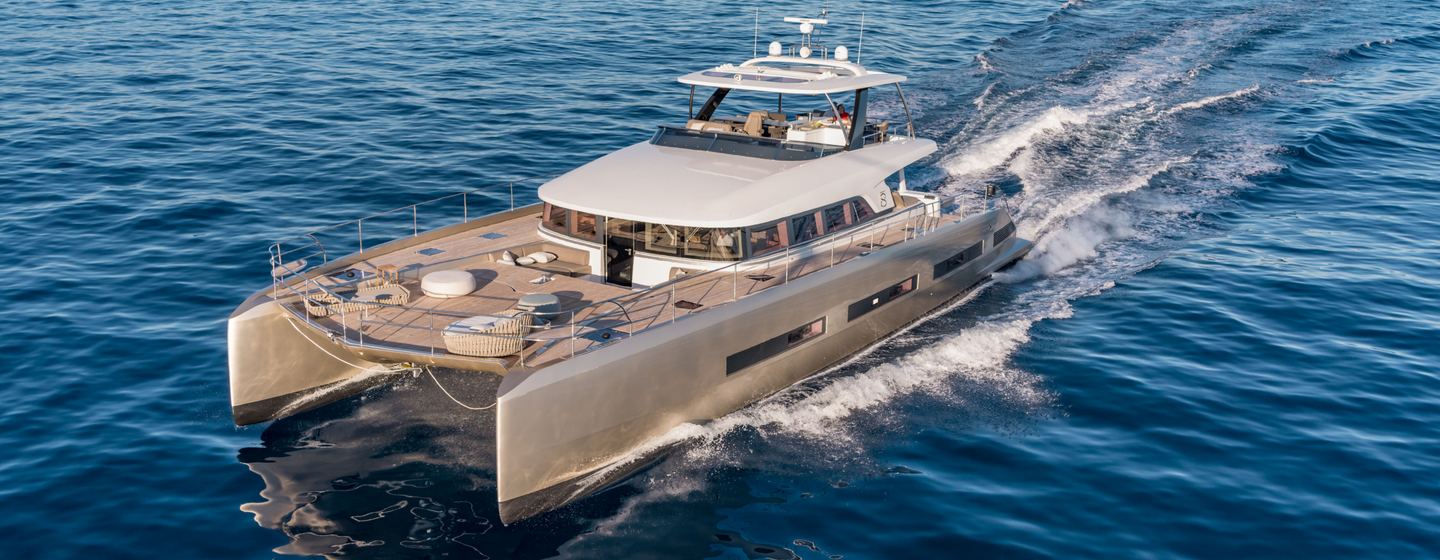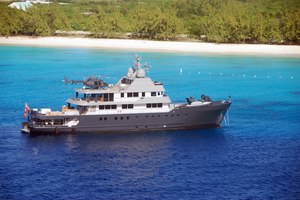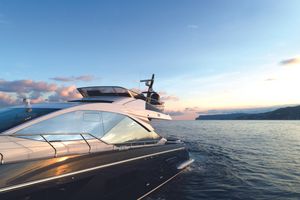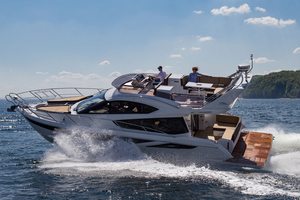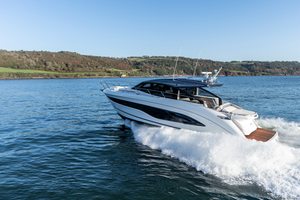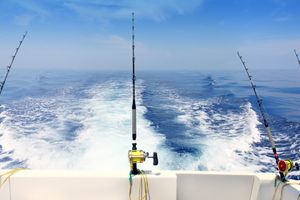Designed for stability, space, and speed, the multihull offers an array of advantages and features specific to this spectacular yacht type.
Multihull yachts have two (or occasionally three) slim hulls running parallel to each other, joined together by a wide platform called a bridge deck. Also known as powercats, catamarans, or trimarans, multihulls are an increasingly popular choice for cruising. While they have many advantages over monohull yachts, there are also a few drawbacks.
Features
Multihulls tend to be much wider than monohulls of the same length, resulting in much more deck space, and therefore a wider foredeck and cockpit. Their width also allows them to have an enormous salon with a huge amount of living space; this normally occupies most of the bridge deck. The trade-off, however, is that most multihulls have smaller sleeping cabins than monohulls of the same size.
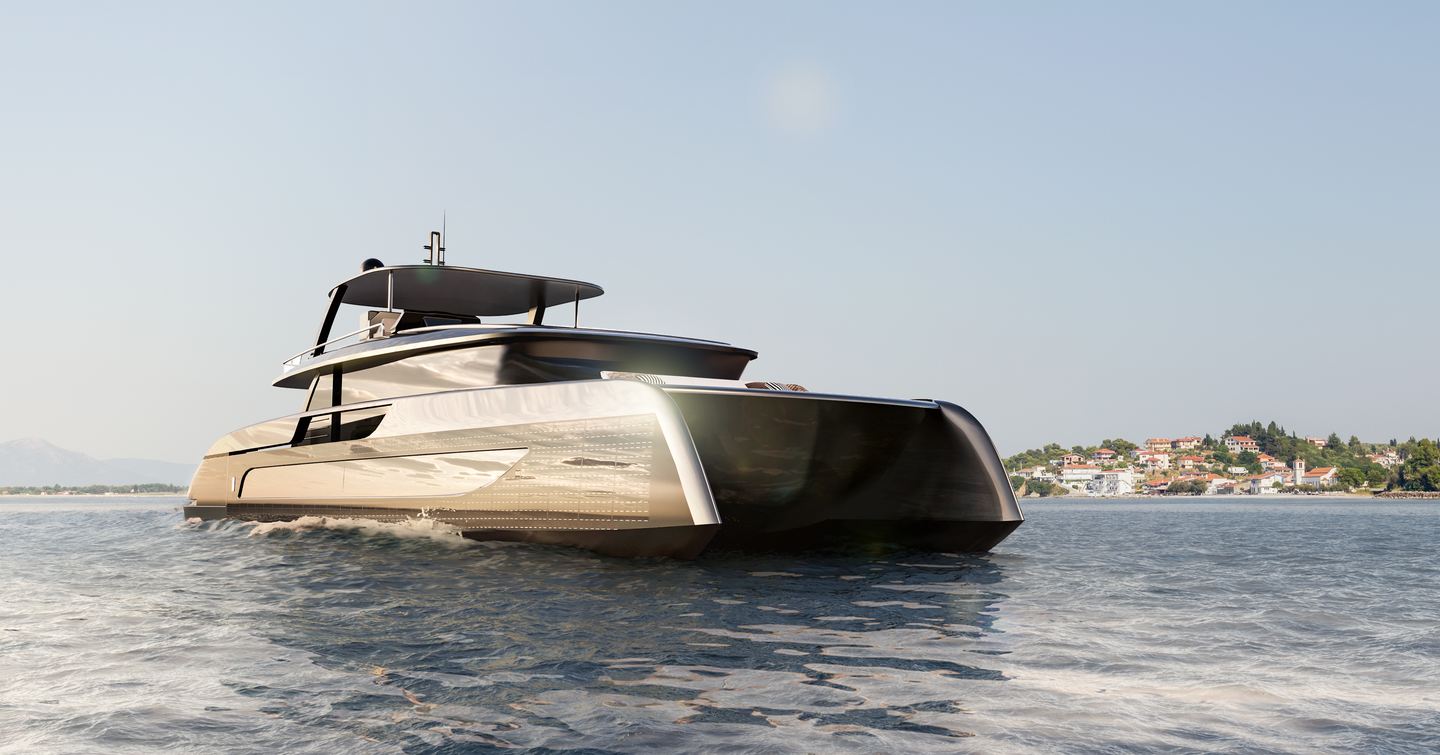
The yacht type also tends to be more fuel-efficient than a monohull traveling at the same speed. Most cruising multihulls are full-displacement yachts, with top speeds of approximately 20 knots, double the speed of a full-displacement monohull. Some, however, have semi-displacement or fast planing hulls and can be even faster. It is also worth noting that multihulls often cost quite a lot more than a similar-sized monohull and due to their width, most marinas and harbors will charge higher berthing fees.
With its expansive platform, the deck area provides ample space, along with a generous foredeck boasting extensive lounging areas for relaxation. Additionally, a substantial aft deck ensures enhanced sheltered comfort whilst underway, and seamless access to the interior salon. The vast salon, spanning the entire beam, offers an unparalleled sense of spaciousness and luxury.
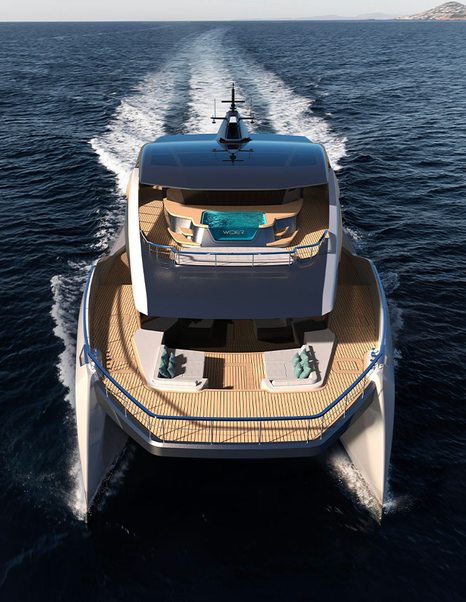
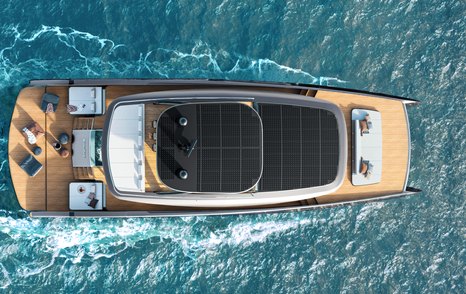
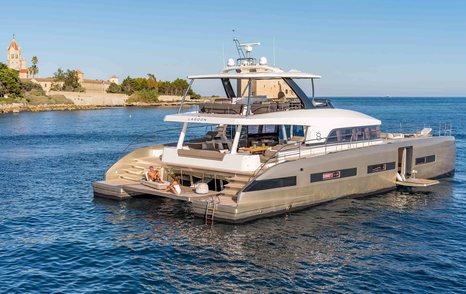
These yachts normally have a square floor plan, resulting in a more sociable space than the long, narrow salons that are typical of monohull yachts. As a result, multihulls are popular with owners who have lots of guests onboard for day trips and parties. Some cruising multihulls also benefit from a flybridge on top of the salon, adding further living space.
Another advantage of the outside space is privacy. Most multihulls, especially those that are designed for chartering, have lots of different places for couples or small groups to sit or lounge separately from one another.
At A Glance:
- Very wide beam
- Shallow draught
- Flybridge (modern designs)
- Long range at high speeds with excellent fuel economy
- Very stable: no rolling motion at slow speeds or when anchored
- Able to carry larger tenders
Design Notes
When looking to buy a multihull yacht, the trade-off, however, is that the large amount of living space results in narrower cabins. This is not necessarily a disadvantage though, as you could have a whole hull to yourself and leave the other for your guests.
Another huge benefit of a multihull is lateral stability. Monohulls can roll horribly at slow speeds and when they’re anchored unless they’re fitted with expensive, hi-tech stabilizers. Even then, motion can still be uncomfortable.
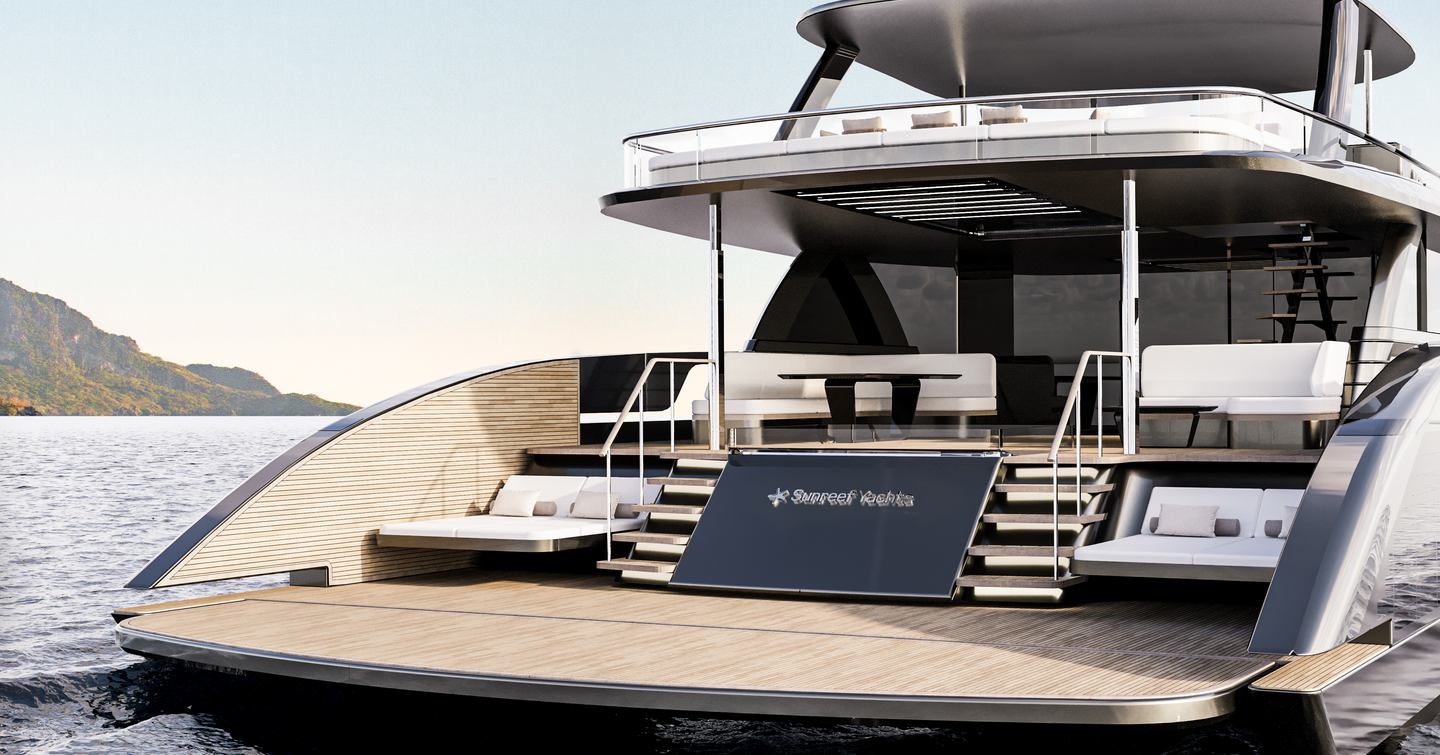
It's also worth noting that some people do prefer the side-to-side rolling motion of a monohull over the fore-and-aft pitching motion of a multihull. As a result, it’s wise to try both before you decide which to purchase.
For cruising multihulls, weight is also a big factor to consider. The yachts must stay light or their hulls won’t work efficiently. This means they can carry less payload, ruling out heavy interior items such as marble sinks. This is also why older multihull yachts tend to not have a flybridge.
Perfect For:
- Long-distance cruising
- Entertaining guests
- Spending extended periods of time at anchor
- Beaching or drying out
- Coastal and offshore use
Multihull Yacht Sizes
Small multihull cruisers are usually at least 50% wider than equivalent monohulls and large ones can be twice as wide. Generally, a 12m (40ft) multihull yacht has the living space of a 20m (65ft) monohull and a 25m multihull has the same square footage on its main deck as a 40m (130ft) superyacht. The real sweet spot for modern multihull cruisers is 20m (65ft) to 30m (100ft), which is large enough for luxurious cabins on the lower decks.
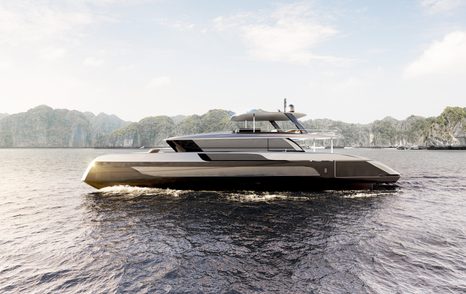
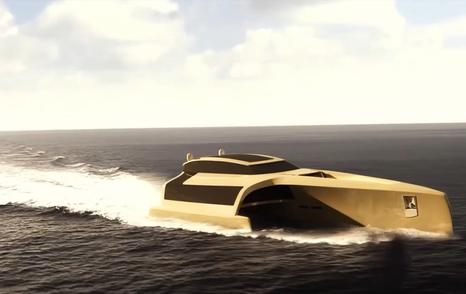
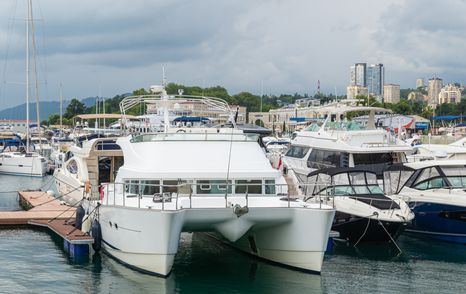

If you want a queen-size island bed, with space to get in and out of it on both sides for example, you’ll want a yacht that’s at least 15m (50ft) long to get the required cabin width on the lower decks. And if a full-beam owner’s suite is at the top of your wish list, you’ll need to buy a monohull instead — unless you can afford a very large multihull (30m+) with two levels of accommodation on the bridge deck.
Performance and Ride
The slender hulls of a multihull cruising yacht slide through the water more efficiently than a monohull, delivering a much smoother ride at high speeds in choppy seas. There are also several other advantages.
Firstly, excellent fuel economy at displacement speeds, and these displacement speeds can be twice as fast as a comparable monohull. Secondly, with less power required to reach a given speed (up to the yacht’s normal displacement hull speed), engine noise is also significantly reduced. As a result, most multihull cruisers tend to have full displacement hulls rather than semi-displacement or planing hulls.
There are, however, some good reasons to consider a semi-displacement or planing multihull. They do tend to consume more fuel than a displacement multihull, but they can be extremely fast while still giving a very smooth, stable ride due to their wider hulls.
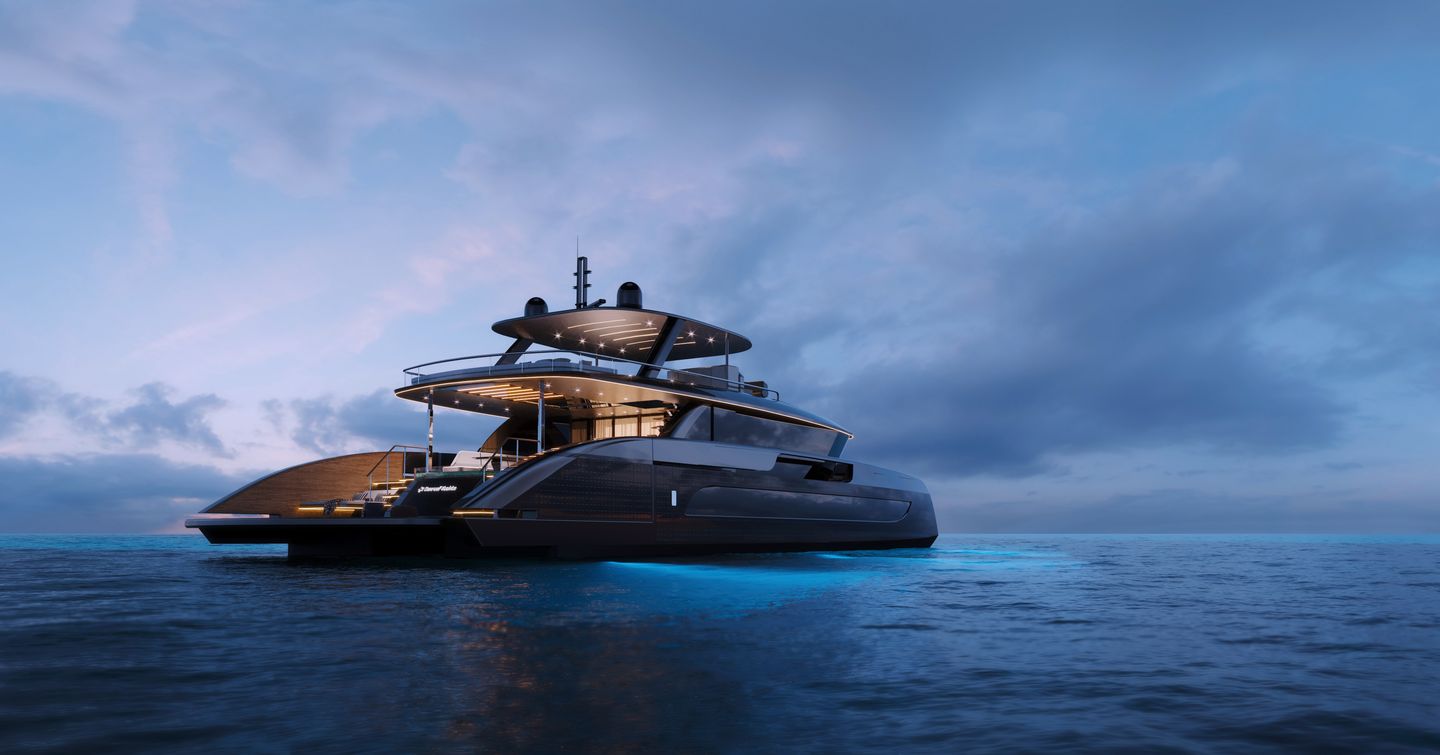
Another benefit is that most multihulls can carry a much larger tender than a monohull of a similar length. Whatever your budget though, it is imperative to consider the payload that each yacht can carry when comparing multihulls.
With multihulls tending to be lighter than monohulls with a larger superstructure, they can be more adversely affected by strong winds, especially at slow speeds. Wind can also affect maneuvers when in harbor, but with two engines and a couple of bow thrusters, most multihulls can easily get in and out of tight spaces; even turning in their own length.
Compared to the bow-up style of a monohull, multihulls tend to run fairly level, giving good visibility when you’re helming or navigating from the inside.
Drag Boats
Power boats or drag boats are known for their extreme speeds and agility on the water. These high-performance vessels, often catamarans or trimarans, are designed to push the limits of acceleration and top speed in competitive racing, aided by engines with up to 10,000bhp.
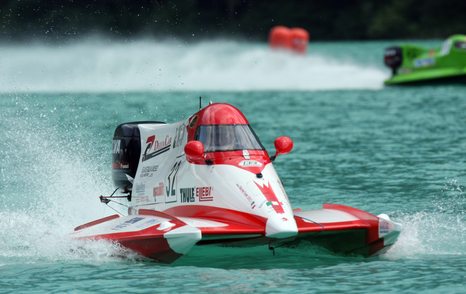

Their lightweight construction, aerodynamic shapes, and multiple hulls minimize hydrodynamic drag, allowing these boats to achieve remarkable speeds. With superior stability due to their hull configuration, they can maneuver sharply around buoys and corners with impressive control.
Cruising Considerations
- Multihulls are ideal for shallow cruising grounds like the Bahamas, where most of the best anchorages have only 2m (6ft) of water — plenty for a typical multihull with just 1.3m (4.6ft) of draft.
- Most marinas tend to charge more for a multihull berth — often twice the fee for a monohull yacht of the same size — making it harder to find a suitable location or slip because the pontoon fingers or boxes are too narrow and the hammerhead berths are already occupied.
- Some multihulls are suitable for crossing oceans and can cope well with rough weather, while others are designed for more relaxed types of cruising. As with monohulls, full-displacement multihulls are the most seaworthy.
- Be sure to consider the hull length to platform length ratio (some experts say the platform shouldn’t be more than two-thirds as long as the hulls for all-weather blue water cruising), and weight distribution by keeping the ends of the hulls as light as possible.
- Also, consider the interior volume of the bows (as more is generally better unless it’s a wave-piercing design) and the clearance of the platform from the waterline (which should be enough to avoid waves slamming into the underside of the bridge deck).
- Multihulls are often made from expensive materials such as carbon fiber composites to keep weight down. This also affects their cruising range because fuel and fresh water are heavy. There are plenty of multihulls with a 1000nm range, but few that can match the range of a full-displacement monohull expedition yacht.
Technical Overview
| Hull Design | Usually displacement, but can be semi-displacement or planing |
| Propulsion | Twin outdrives/stern drives, shaft or pod drives |
| Performance | 15-20 knot cruising speed, 20-30 knots top speed (displacement hulls) |
